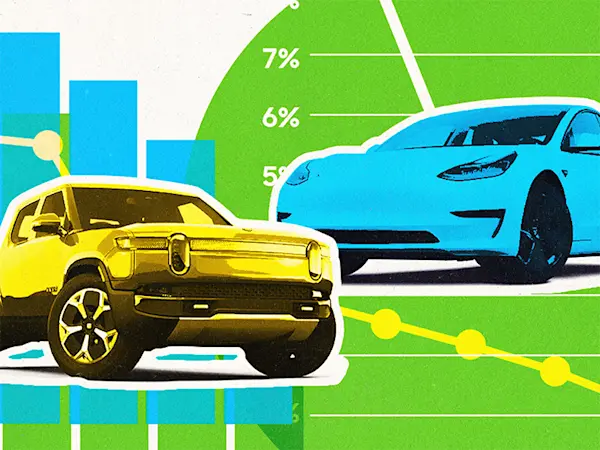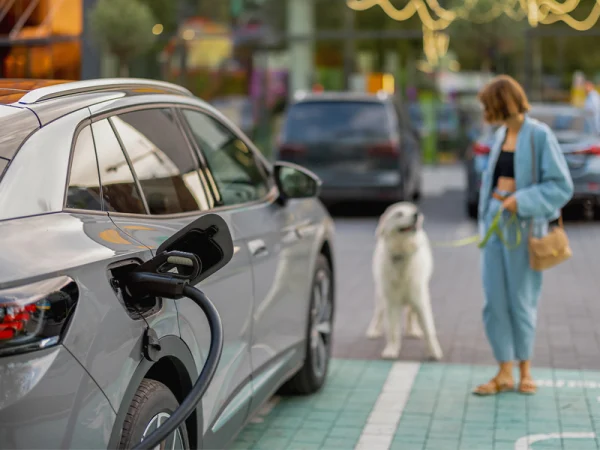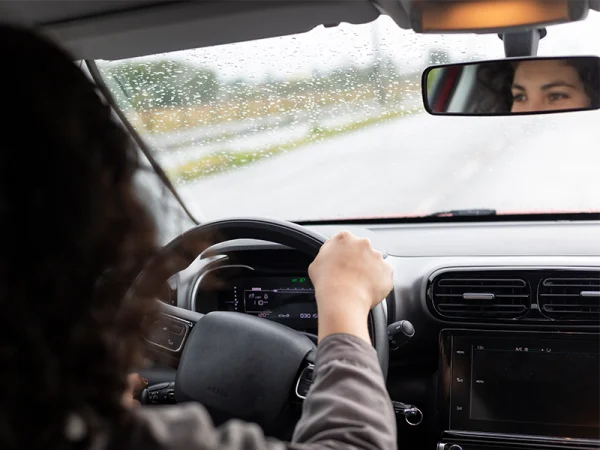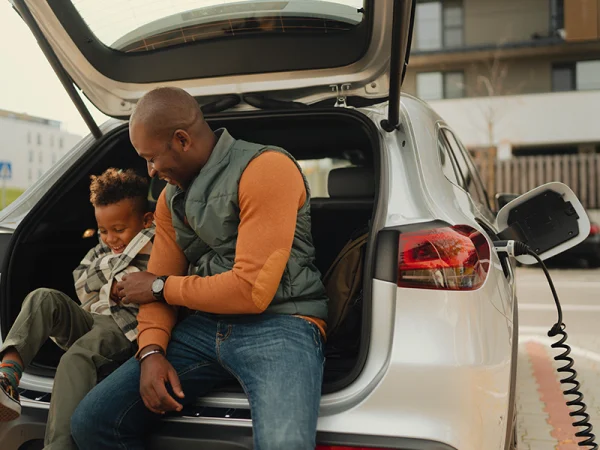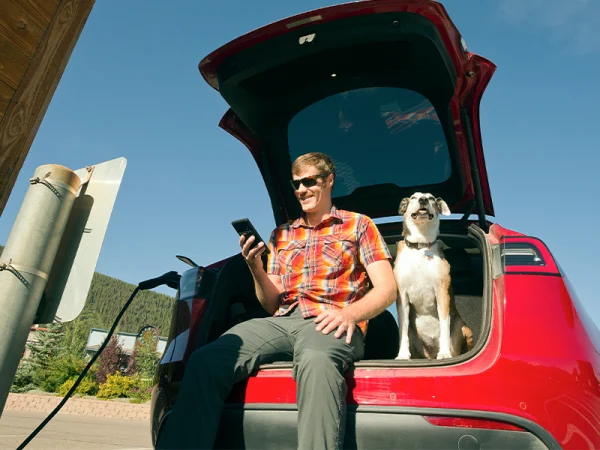2018 Nissan Leaf review
Nissan Leaf highlights
Customer rating
Pros
- Fully electric
- Quick acceleration
- Lots of standard driver-assist features
Cons
- Rear seats don't fold flat
- No telescoping steering wheel available
- Limited front-seat storage for items like phones and drinks
Battery range (EPA estimate)
151 miles
Pricing for current inventory
(no current inventory)
Shop with your budget in mind
Getting pre-qualified lets you shop with personalized monthly payments, and it doesn't impact your credit score.
A compact electric hatchback reinvented.
Launched for the 2011 model year, the Nissan Leaf is one of the first fully electric cars that can accommodate a family. Thanks to its relatively conventional appearance both inside and out, the Leaf makes it easy to go electric. Nissan has continually improved on the Leaf, making the 2018 model incredibly appealing. The second-generation Leaf debuted in 2017, building on the strengths of its predecessor, but with more style, more technology, and a more practical range. The 2018 Nissan Leaf has an EPA-estimated range of 151 miles on a full charge, and with technology highlights like ProPilot Assist and e-Pedal driving systems, this model of the trailblazing electric compact hatchback goes farther in style. Range figures are based on EPA estimates for when a vehicle is sold as new and assume a full battery charge. Range will vary based on things like battery age, vehicle condition and history, driving and charging habits, accessory use, and driving conditions. Battery capacity may decrease with time and use. See fueleconomy.gov for more info.
All Nissan Leaf years
Not sure what year to select? Learn about each Nissan Leaf generation from 2012 to 2026
What is new for the 2018 Nissan Leaf?
- Enhanced safety features including automatic emergency braking and lane-keeping assist now standard.
- All models now include a larger infotainment touchscreen with improved user interface.
- Newly available trim level offers premium audio system and upgraded interior materials.
- Standard warranty extended to 5 years/60,000 miles for added peace of mind.
2018 Nissan Leaf trims
Curious how Nissan Leaf trims differ? Use our side-by-side vehicle comparison to see the differences and similaritiesS
Includes 16-inch steel wheels with trim covers, cruise control, digital meter cluster, remote-control-powered door mirrors, Bluetooth hands-free phone system, and more.
SV
Adds 17-inch machined-face aluminum wheels, fog lights, a quick charge port, intelligent cruise control, seven-inch color LCD display NissanConnect with navigation radio system, and more.
SL
Unlocks heated exterior mirrors with integrated turn signals, LED low beam headlights and daytime running lights, heated front seats, eight-way power-adjustable driver's seat, leather trim, and more.
Nissan Leaf photos
5 reasons to buy the 2018 Nissan Leaf
1. Great range
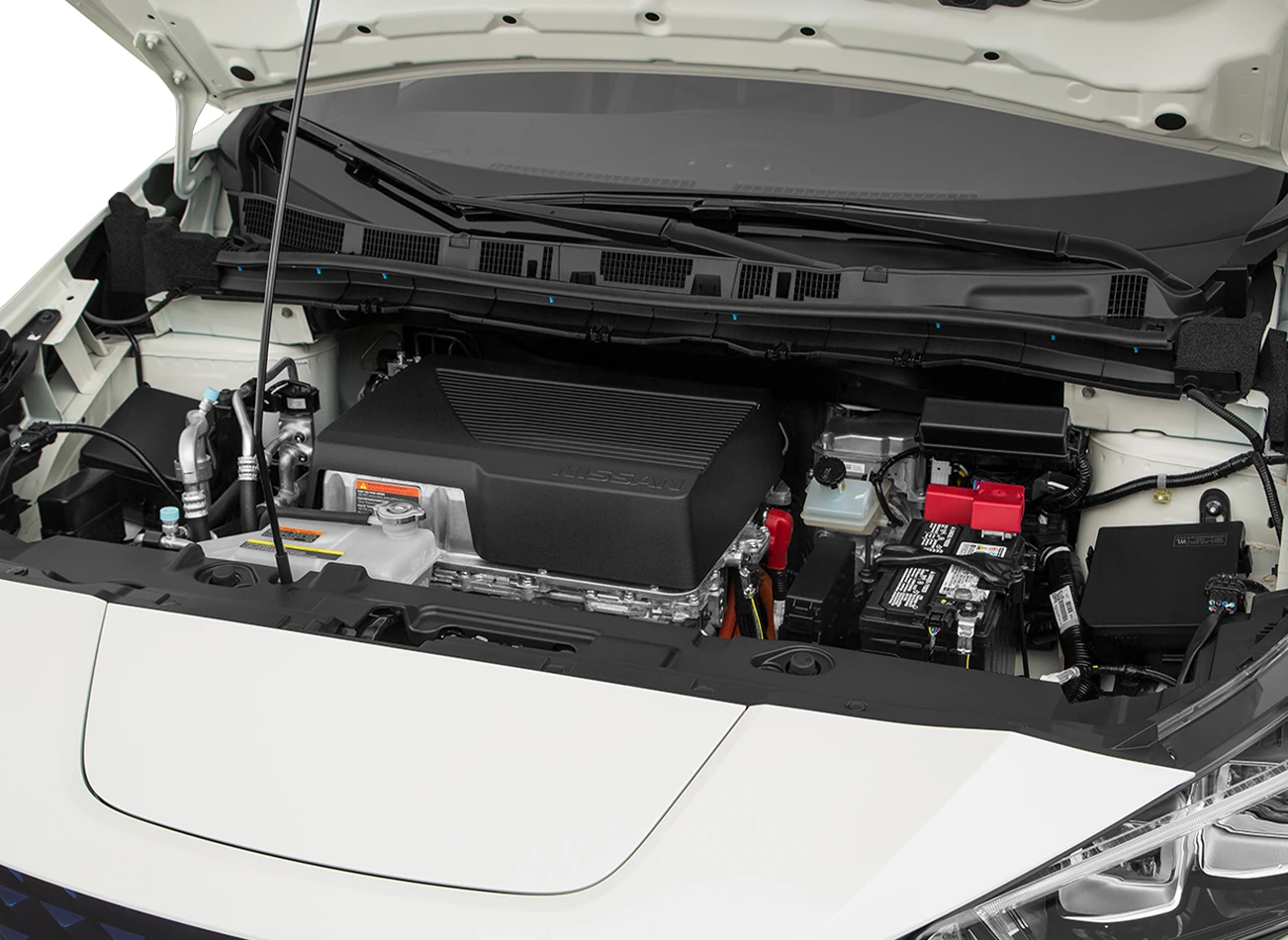
The 2018 Nissan Leaf has a 40kWh battery, which is a significant upgrade from previous generation models. The 2018 Leaf can go farther on a single charge, so you don't have to stop as often for charging. You'll get an EPA-estimated range of 151 miles on a full charge.
This makes the 2018 Nissan Leaf a great choice in the city as well as on the freeway.2. One-pedal driving
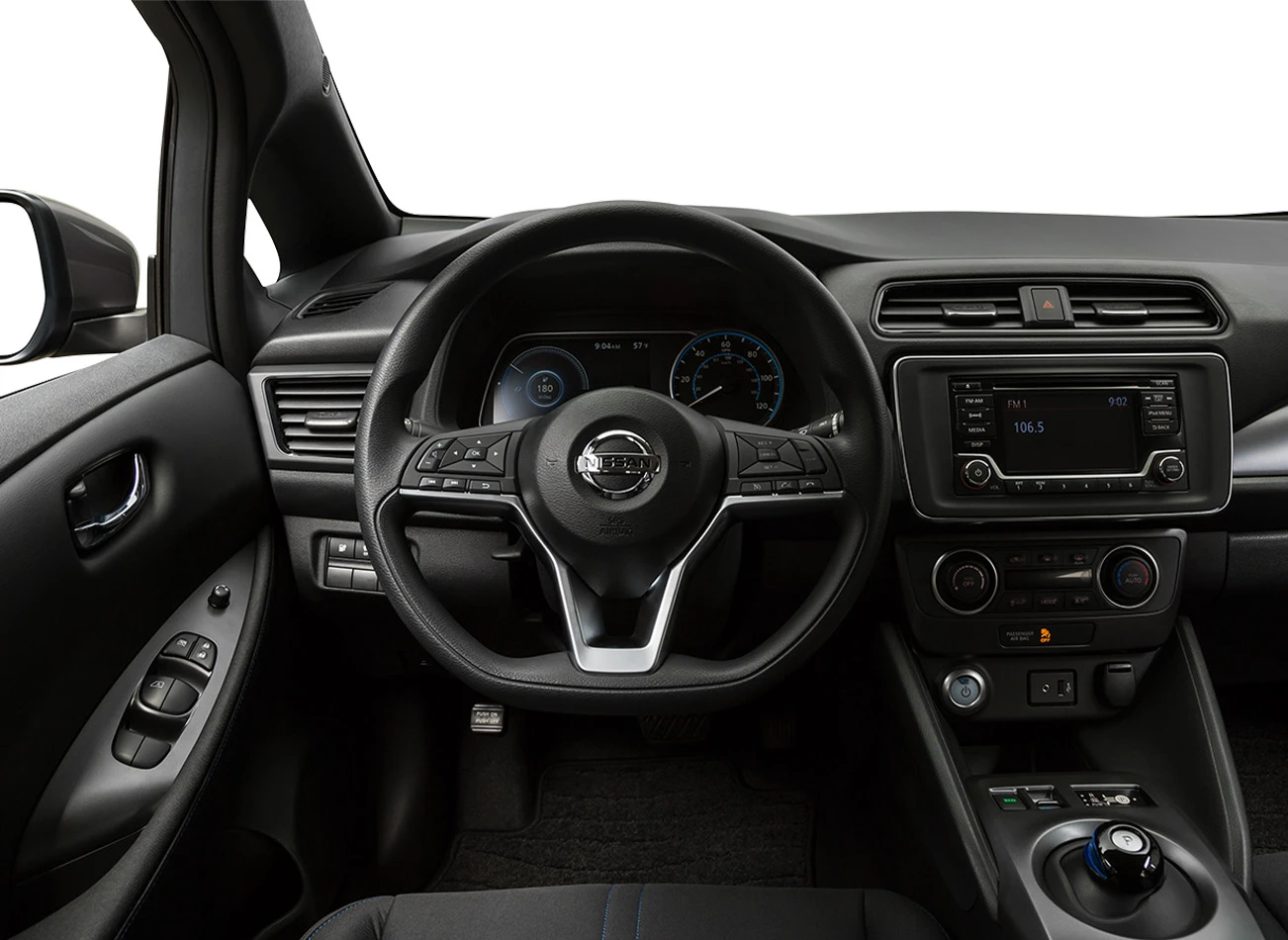
The 2018 Nissan Leaf features the e-Pedal, which is essentially a one-pedal driving system. This means you can accelerate, decelerate, and stop by increasing or decreasing the pressure applied to the accelerator pedal itself. When the pedal is fully released, regenerative braking takes place (by slowing down the motor to regain some range) and the friction brakes are applied automatically, bringing the Leaf to a complete stop, even on a steep hill.
3. Instant acceleration
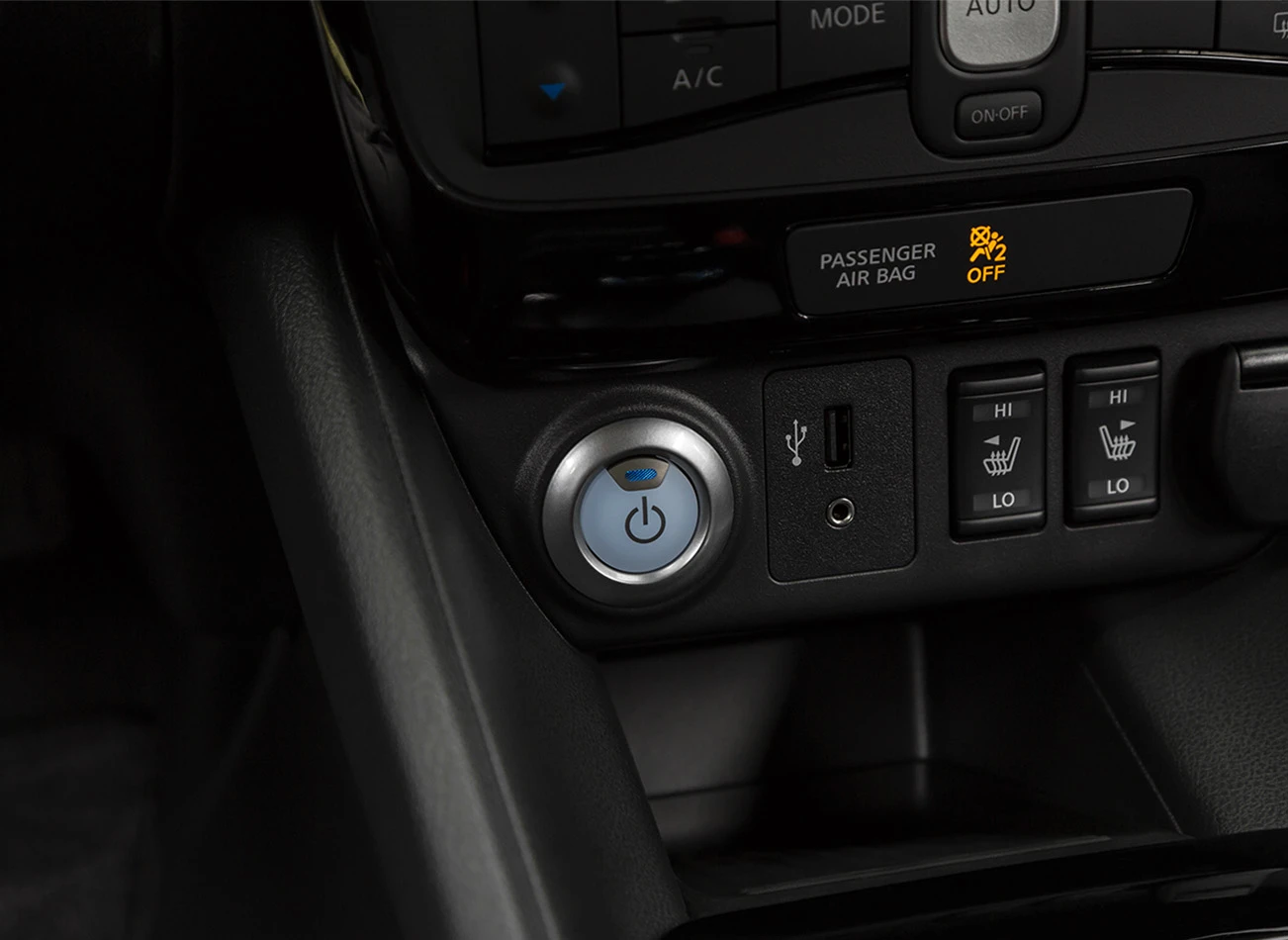
One of the best things about an electric car is instant access to its full torque, which gives you incredible acceleration—even on an unassuming hatchback. The 147 hp and 236 lb-ft of torque on the 2018 Nissan Leaf provide a pace that's perfect for busy urban traffic, whether you're on a grocery run or taking the kids to school.
4. Plenty of technology
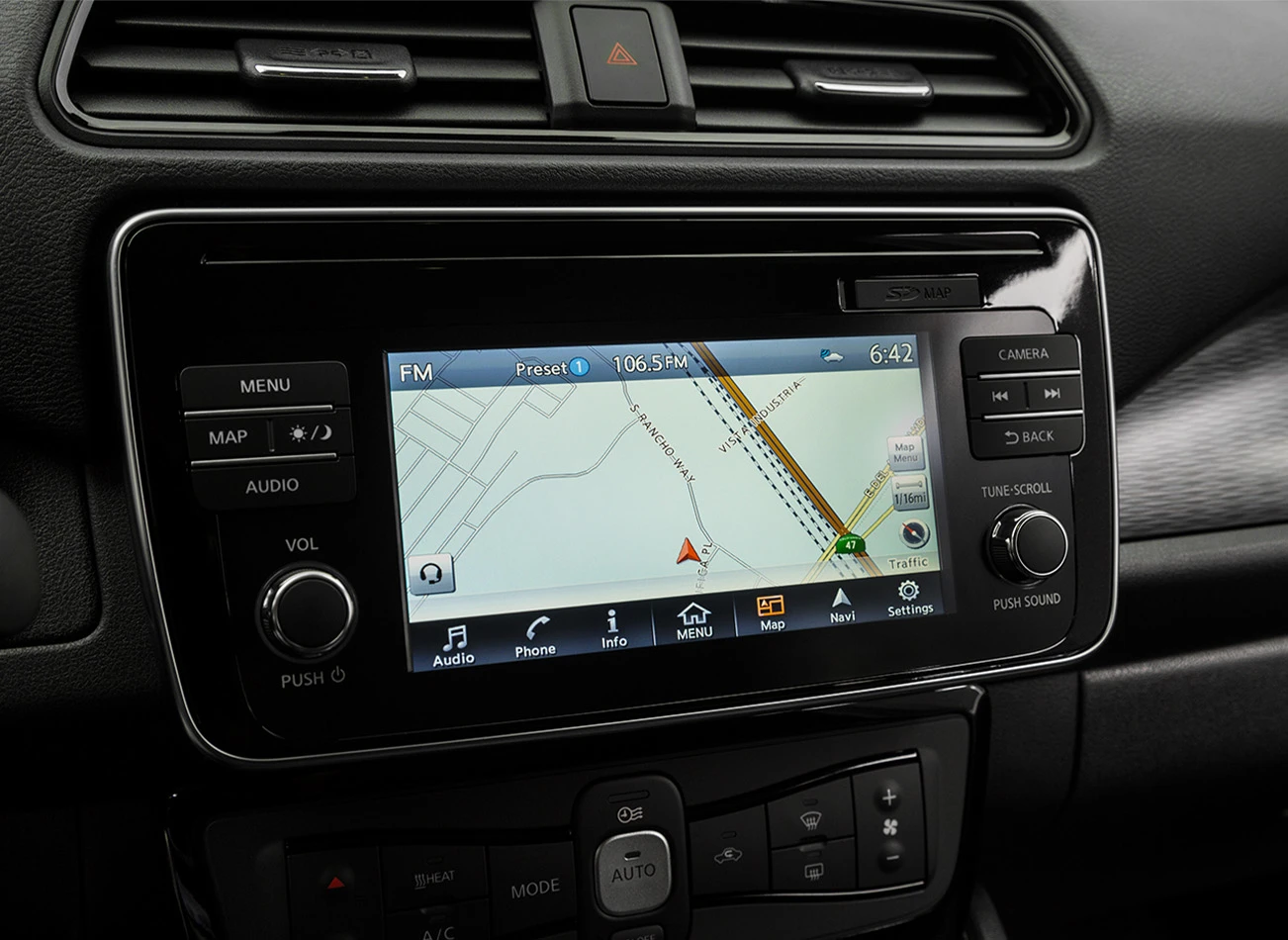
The 2018 Nissan Leaf is loaded with technology, all designed to entertain or assist you as you drive. Bluetooth® streaming and SiriusXM® satellite radio are standard on all models, and entry-level S models have a five-inch color display radio/CD system. 2018 Nissan Leaf SV and SL models feature NissanConnect® with navigation and Apple CarPlay® and Android Auto™ connectivity, as well as a seven-inch color display. Automatic emergency braking is standard on all trims, with Nissan's ProPilot Assist driver-assistance system optional on SV and SL trims.
5. Fast and easy charging
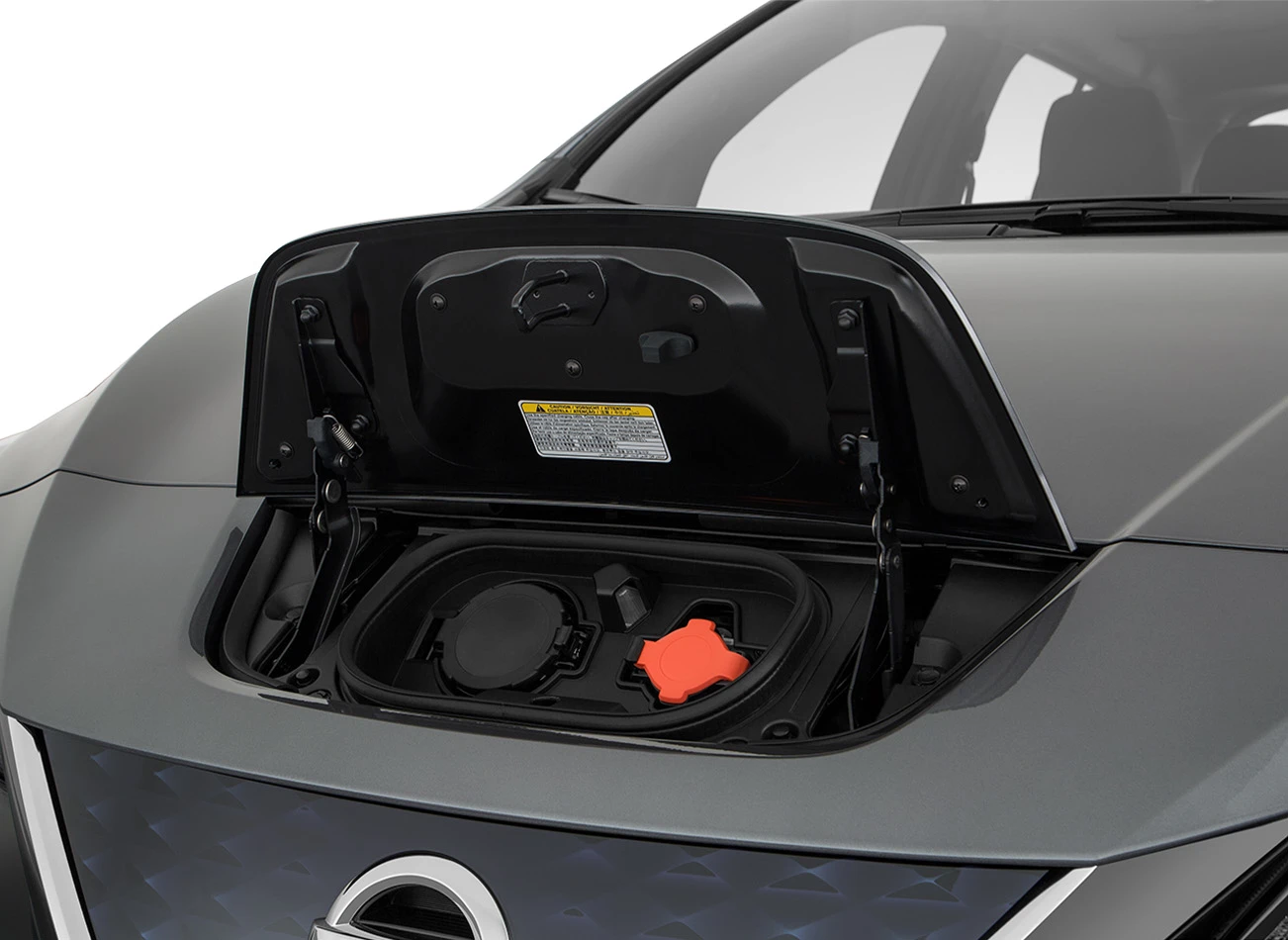
A more powerful onboard charger means that the 2018 Nissan Leaf charge time for a full battery recharge is 7.5 hours on a 220V power connection. A rapid charging option is also available. The quick charge port on higher-trim Leafs allows charging to 80 percent battery capacity in only 40 minutes at a fast-charging station. A revised charge port location at the front makes 2018 Nissan Leaf charging easy, as does a standard charge port light and door lock.
Similar vehicles
If you're interested in the 2018 Nissan Leaf, you should also check out these similar vehicles from Previous generation years.
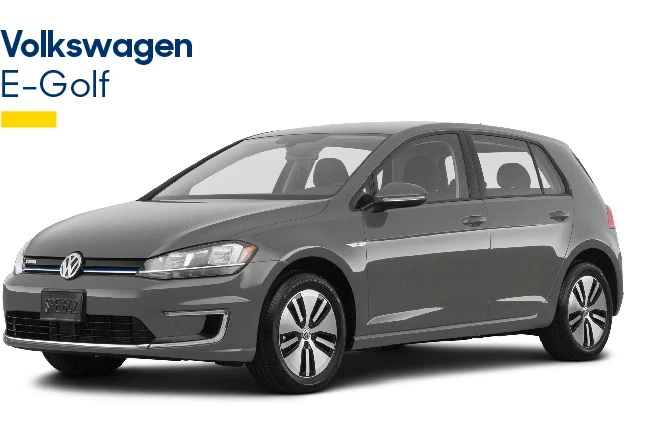
If you are looking for a premium compact EV that feels like driving a normal car, check out the Volkswagen e-Golf. VW updated the powertrain of the e-Golf for 2017 to add a new 35.8 kWh lithium-ion battery that bumped range from an EPA-estimated 83 miles (2016 models) to 125 miles when fully charged.
That means more fun out on the open road in your e-Golf, and with 22.8 cu-ft of space behind the back seats, you can bring more friends and gear along for the ride.The base e-Golf is well equipped with standard equipment for 2017-2019 model years, including:
Cloth upholstery
Automatic headlights
LED running lights
Dual-zone automatic climate control
Heated power-reclining front seats
Eight-inch touchscreen
Apple CarPlay and Android Auto integration

The Kia Niro EV is based on the Niro compact crossover first launched in 2017. An EPA-estimated range of 239 miles from the 64kWh battery (on a full charge) makes the 2019 Kia Niro EV a practical family car for road trips.
The 201-hp motor of the 2019 Kia Niro EV provides plenty of power too, and a spacious interior can accommodate all your crew's stuff.Standard features on the 2019 Kia Niro EV include:
Xenon headlights
Adaptive cruise control
CCS fast-charging as standard

The Hyundai IONIQ is a hybrid hatchback with seating for five that was introduced in 2017. It has a solid cargo hold, offering 26.5 cu-ft of cargo space on the 2022 model, making it a great choice for families and outdoor enthusiasts. The IONIQ comes standard with a 139-hp engine in model years 2018–2022 and is only available in front-wheel drive. Here's what you'll find on the 2018–2022 IONIQ:
Standard Keyless entry
Standard Apple CarPlay and Android Auto connectivity
Available heated leather seats
Shop with your budget in mind
Getting pre-qualified lets you shop with personalized monthly payments, and it doesn't impact your credit score.
Ratings & reliability
Customer ratings
4.5 out of 5
11 customer reviews| 5 Stars | 7 |
|---|---|
| 4 Stars | 2 |
| 3 Stars | 2 |
| 2 Stars | 0 |
| 1 Star | 0 |
RepairPal gave the Nissan Leaf an overall reliability rating of 4.5 out of 5 stars, which RepairPal describes as Excellent. This rating ranks Nissan Leaf 1st out of 6 among Alternative Fuel Vehicles.
View RepairPal's full rating of the Nissan LeafNissan Leaf features and specs
Curious how Nissan Leaf trims differ? Use our side-by-side vehicle comparison to see the differences and similarities
SV 4D Hatchback 2WD
Standard Features
- Power Locks
- Power Windows
- Air Conditioning
- Rear Defroster
- Cruise Control
- ABS Brakes
- Cloth Seats
- Power Mirrors
- Traction Control
- Side Airbags
- Overhead Airbags
- Rear View Camera
- Parking Sensors
- Smart Key
- Alloy Wheels
- Rear Spoiler
- Automatic Transmission
- Android Auto
- AM/FM Stereo
- Auxiliary Audio Input
- Navigation System
- Satellite Radio Ready
- Bluetooth Technology
- Apple CarPlay
- Automated Cruise Control
- Power Seat(s)
- Front Seat Heaters
- Heated Steering Wheel
- Blind Spot Monitor
- Lane Departure Warning
- Cloth Seats
- Heated Mirrors
Drive Wheels
Front Wheel Drive (2WD)
Engine size
0.0L
Engine type
Electric
Wheelbase
106.3"
Overall length
176.4"
Width
70.5"
Height
61.6"
Leg room
F 42.1"/R 33.5"
Head room
F 41.2"/R 37.3"
Front tires
P215/50VR17
Rear tires
P215/50VR17
Seating capacity
5
Transmission
Automatic
2018 Nissan Leaf FAQ
Yes, you can plug a 2018 Nissan Leaf into a regular outlet, like the one you might have at your home or workplace. A portable trickle charge cable for 110V EV charging was included as standard when the car was new.
The EPA-estimated range for the 2018 Nissan Leaf is 151 miles on a full charge. Range figures are based on EPA estimates for when a vehicle is sold as new and assume a full battery charge. Range will vary based on things like battery age, vehicle condition and history, driving and charging habits, accessory use, and driving conditions. Battery capacity may decrease with time and use. See fueleconomy.gov for more info.
The 40kWh lithium-ion battery on the 2018 Nissan Leaf should last for 8 to 10 years. The battery is guaranteed for 8 years or 100,000 miles against defects and excessive capacity loss.
More about the 2018 Nissan Leaf
Color options
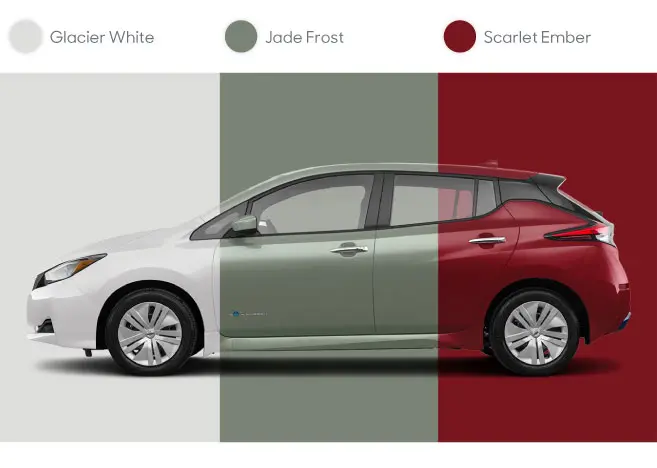
Exterior colors:
Brilliant Silver
Deep Blue Pearl
Glacier White
Gun Metallic
Jade Frost
Pearl White
Pearl White Two-Tone/Super Black
Scarlet Ember
Super Black
Interior colors:
Black (All trims)
Light Gray (SL only)
Interior details
The 2018 Nissan Leaf interior can seat five passengers in two rows. Both the entry-level S and mid-range SV models have cloth interior trim, with leather standard on the SL trim. The standard trim color is black, with light gray optional on the SL. The Leaf has plenty of storage spaces around the cabin, including four bottle holders and two cup holders.
Suitable for small families and groups, the 2018 Nissan Leaf has 23.6 cu-ft of trunk space with the rear seats in place, increasing to 30 cu-ft when folded down. The 42.1 inches of front-seat legroom and 33.5 inches of rear-seat legroom mean you and your passengers can travel in comfort.
Child seat details
You can fit two child car seats in the rear row of the 2018 Nissan Leaf, including LATCH car seats, infant rear seats, rear-facing convertible car seats, forward-facing convertible car seats, and booster car seats. There are two complete sets of LATCH connectors on the rear outboard seats, along with a tether anchor for the rear middle seat.
Performance
All models of the 2018 Nissan Leaf have the same 147-hp powertrain and 40kWh battery. The Leaf's get-up-and-go is more akin to a family car than a Ferrari—despite that instant torque—but it reaches zero to 60 mph in 7.5 seconds (according to the manufacturer, when new). The range for all models is an EPA-estimated 151 miles on a full charge.
The 2018 Nissan Leaf is a front-wheel-drive hatchback, with power fed through a single-speed reducer transmission, controlled by a shift-by-wire drive selector. Three driving modes allow you to tailor the driving style of the car to preserve range. "Normal" is the default setting. "Eco" mode brings increased regenerative braking and limits the 110kW electric motor's output, which also reduces the air conditioning system's operation. "B" mode provides even more aggressive regenerative braking when slowing down.
Year comparison
2011-2017 Nissan Leaf (first generation)
The Nissan Leaf debuted for the 2011 model year. Initially, only a 24kWh battery was available, with an EPA-estimated range of 84 miles on a full charge for 2011 models.
All models were front-wheel drive, fitted with the same 80kW/107-hp electric powertrain. SV and SL trims offered different levels of equipment, including the option of a quick charge port for shorter charging times. The 2013 model year introduced 240V charging, along with an entry-level S trim. A larger-capacity 30kWh battery was introduced on the 2016 Nissan Leaf, increasing the EPA-estimated range to 107 miles on a full charge.2018-present Nissan Leaf (second generation)
The second-generation Nissan Leaf arrived in 2018. Under the bigger and sharper-looking body, all 2018 Leaf trim levels were fitted with a 40kWh battery, bringing a significant range upgrade. The 2018 Leaf has an EPA-estimated range of 151 miles when fully charged.
ProPilot Assist and e-Pedal intelligent driving technologies make the second-generation Leaf enjoyable and relaxing to drive.In 2019, the range was increased further with the arrival of the Nissan Leaf e+ (renamed Leaf Plus in 2021). A 62kWh battery and 160kW/214-hp electric motor increased the single-charge driving distance to an EPA-estimated 226 miles, and charging was boosted with a new 70kW (100kW peak) quick-charging system.
A CHAdeMO quick-charge port became standard across all trims from 2021.Research other vehicles
- nissan leaf used car value
- 2011 nissan leaf used car value
- 2012 nissan leaf used car value
- 2013 nissan leaf used car value
- 2014 nissan leaf used car value
- 2015 nissan leaf used car value
- 2016 nissan leaf used car value
- 2017 nissan leaf used car value
- 2018 nissan leaf used car value
- 2019 nissan leaf used car value
- 2020 nissan leaf used car value
- 2021 nissan leaf used car value
- Used 2020 Nissan Leaf near me for sale
- Used 2023 Nissan Leaf near me for sale
- Used Black Nissan Leaf near me for sale
- Used Blue Nissan Leaf near me for sale
- Used Gray Nissan Leaf near me for sale
- Used Nissan Leaf with Navigation System near me for sale
- Used 2021 Nissan Leaf S Plus near me for sale
- Used Nissan Leaf SV Plus near me for sale
- Used White Nissan Leaf near me for sale
- 2014 Audi RS5 review
- 2019 Chevrolet C4500 review
- 2013 Chrysler 200 review
- All things EV
- 2015 Mercedes-Benz E400 Hybrid review
- 2025 Nissan Kicks review
- 2025 Nissan Leaf review
- 2012 Nissan Leaf review
- 2017 Nissan Leaf review
- 2019 Nissan Leaf review
- 2022 Nissan Leaf review
- 2025 Ram 1500 review
- 2019 Volkswagen Golf Electric review
We hope you found this information helpful. This content is intended to inform and is not meant to indicate that a particular vehicle is currently available or recommended for you.
Statements of fuel economy or EV range are based on EPA and other third-party estimates for vehicles when new. Fuel economy and EV range will degrade with time and vary based on age, driving conditions, vehicle history, and other conditions. See fueleconomy.gov for more info.
Unless otherwise noted, information related to featured vehicles comes from third-party sources, including manufacturer information. Product and company names may be trademarks or registered trademarks of third-party entities. Use of them does not imply any affiliation with or endorsement by these entities. By clicking on any video links, you will be taken to a third-party site maintained by YouTube, Inc.
We make every effort to provide accurate information, but please verify before purchasing.


